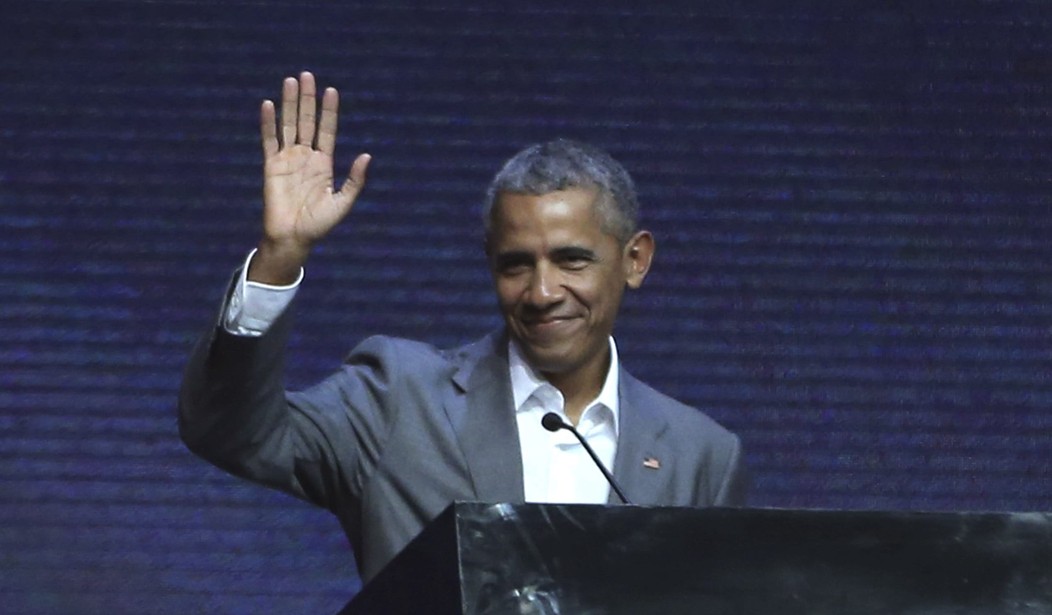In the aftermath of World War III (lamest apocalypse EVER), an Iranian official suggested that if the Islamic Republic is strapped for cash, all it needs to do is detain some U.S. hostages. After all, President Barack Obama paid Iran $1.7 billion when the regime released Iranian-American journalist Jason Rezaian in January 2016. Technically, the payment was part of the Iran deal, not a ransom for Rezaian. Hassan Abbasi, a political strategist for the Islamic Revolutionary Guard Corps (IRGC) — a U.S.-designated terrorist group tasked with quashing dissent within Iran — didn’t see it that way, however.
Abbasi cited the Iran deal as evidence that hostages are a great money-making scheme.
“So, look how the IRGC generates funds,” he said in a speech aired on Iranian state television. “The IRGC detains a spy like Jason Rezaian. The U.S. pleads for him to be released. We say: no, you have to pay for him. Our government gets paid $1.7 billion to hand over this spy.”
He drew the conclusion, “Thus, by detaining just one spy, the IRGC earns the equivalents of the $1-2 billion it was supposed to receive from the government budget.”
Iran is struggling in the aftermath of a brief showdown with the U.S. After Iran-backed militias stormed the U.S. Embassy in Baghdad, President Donald Trump ordered an airstrike that killed Qasem Soleimani, head of the Quds Force — a branch of the IRGC. Iran launched retaliatory missiles that did not kill a single U.S. soldier but did shoot down a Ukrainian jet leaving Tehran. The strike killed 176 passengers. When Iran finally took responsibility for the strike, the streets filled with protesters.
The government of Qatar offered the Islamic Republic $3 billion, ostensibly to compensate for the Iranians who lost their lives in the strike on the Ukrainian plane. Iranian activists condemned the payment as “covering up a crime,” but Abbasi did not fail to mention it in his remarks.
“Now, after they killed the IRGC’s Qasem Soleimani, our government received $3 billion of blood money for Qasem just from Qatar (which hosted the attackers),” the IRGC leader said.
He praised the IRGC as a force for good both in Iran and across the Middle East.
“The IRGC creates dams, roads, highways, and brings security to Syria, Iraq, Lebanon, Palestine and elsewhere. It runs newspapers and produces TV shows. And yet the president complains of ‘the government with guns,'” Abbasi added.
“Do you want to solve the sanctions problem? Our forces at sea that go for patrols each month should take 10 or 20 Americans as hostages. For each one of them, we should get $1 billion. If you get $1 billion per week, the year has some 51 weeks. That’s at least $50 billion,” he said.
Again, President Obama did not explicitly give the $1.7 billion to Iran as a ransom for Rezaian, but the payment still set a horrible precedent.
As part of the Iran deal, Obama offered to repay Iran for funds that had been seized in 1979. In the 1960s and 1970s, Iran was the largest partner of the U.S. Foreign Military Sales (FMS) program. Under the program, Iranian funds would pay U.S. contractors through a trust fund. In February 1979, the U.S. and Iran agreed to halt payments and voided remaining purchases. The remaining funds were to be put in an interest-bearing account.
Later that year, after Iran seized the U.S. Embassy in Tehran and took Americans hostage, the Carter administration froze all Iranian assets in the U.S. In 1982, Iran filed a claim with the tribunal associated with the FMS Trust Fund. The funds amounted to $600 million until the George W. Bush administration returned $200 million to Iran in a partial settlement in 1990.
Under the Iran deal, Obama agreed to a settlement returning the $400 million principal and paying $1.3 billion in interest.
The money was handed over on January 16, but the transaction was put on hold for several hours due to complications regarding the location of Jason Rezaian’s wife and mother, who were in Iran.
In other words, the U.S. paid Iran — which it still considers a terrorist government — $1.7 billion, ostensibly to make good on the seizure of Iranian assets. This came in exchange for Iran’s promise not to enrich uranium and pursue its nuclear ambitions — a promise the Islamic Republic had no intent on keeping.
Liberals have faulted Trump for worsening relations with Iran, but the president was right to withdraw America from this disastrous deal. This deal reversed the Carter administration’s original message. When Iran seized U.S. hostages in 1979, it paid a price for it. Yet Obama established that the U.S. would pay handsomely to get empty promises and just one hostage.
It seems not everyone in Iran got the message from Trump’s strike on Soleimani. Despite that move, Iranian thugs seemingly think they can just shake down the U.S. for money. Thanks, Obama.
Iran's regime uses terror as a tool of its foreign policy. Listen to IRGC strategist Hassan Abbasi telling his forces how taking Americans hostage previously led to lucrative ransoms.
The 2015 Iran Deal was nothing but a pipe dream.CC: @RichardGrenell @DonaldJTrumpJr @PressSec pic.twitter.com/vEiiJms3G9
— M. Hanif Jazayeri (@HanifJazayeri) January 21, 2020
Tyler O’Neil is the author of Making Hate Pay: The Corruption of the Southern Poverty Law Center. Follow him on Twitter at @Tyler2ONeil.









Join the conversation as a VIP Member